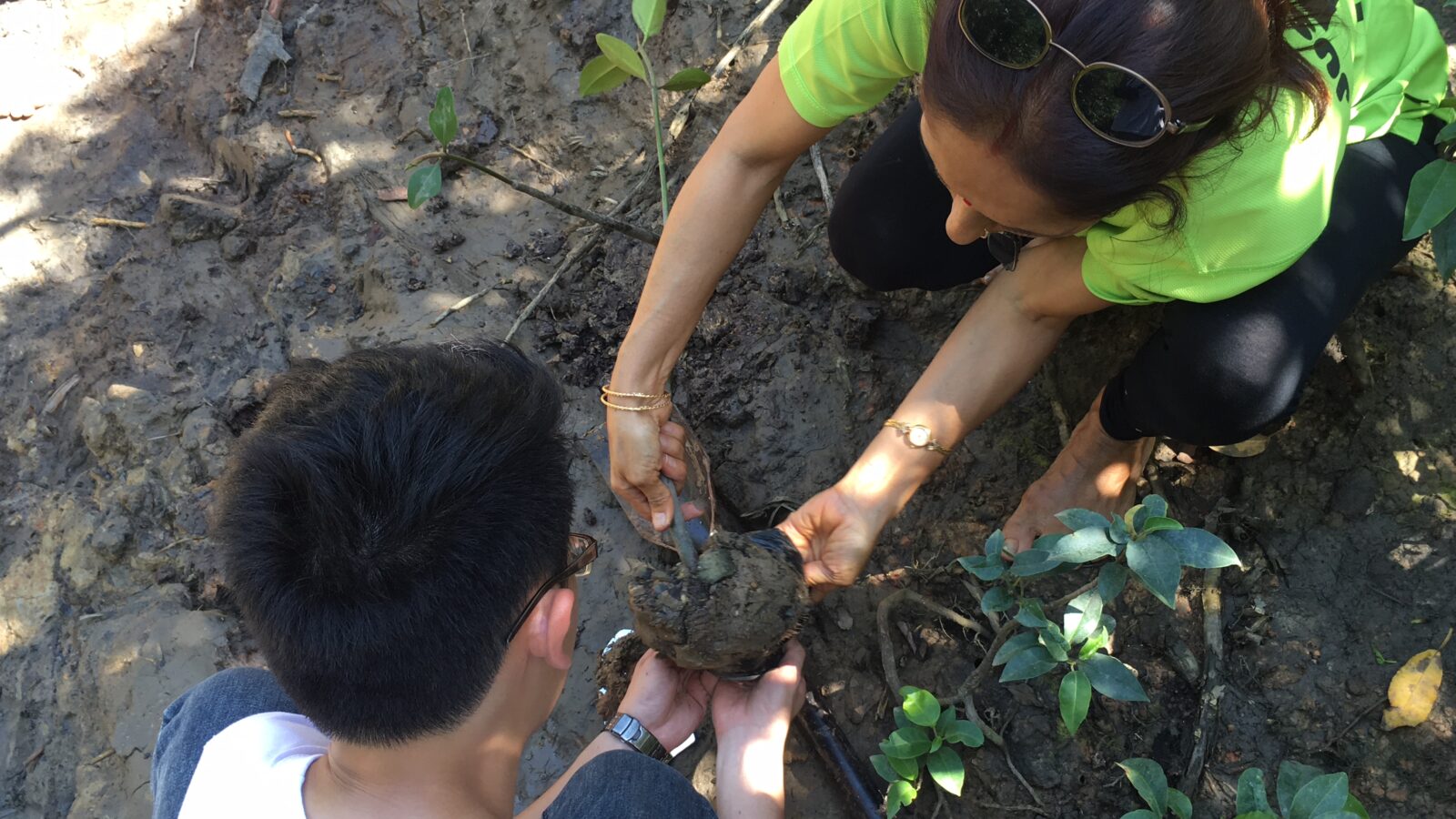To learn about journalism, sometimes you have to get your hands dirty — and that’s exactly what the aspiring teen journalists at the BRATs Langkawi 2015 Year-End camp did on Dec 2-5.
The participants were divided into four teams, and we were part of #TeamIan, named after our facilitator, R.AGE editor Ian Yee.
We visited the mangrove forest along Kilim River, where our team planted several mangrove saplings. Boats were hired to take us around Kilim River, which is full of natural wonders that attract countless tourists every year.
The Rotary Club of Langkawi came along for the boat ride, and sponsored the mangrove saplings.
Planting the saplings was surprisingly easy, even though we had to step off the boats and onto the muddy river bank, which made things a bit messy. But basically, all we had to do was dig a small hole, put the sapling in it, and cover it back up.
Even though mangrove forests are found throughout Malaysia, many of us do not realise the importance of mangrove trees. For example, they act as a protective barrier. They helped a lot in reducing the impact of the Kedah tsunami in 2004.
In the past, mangrove trunks were used as the foundation for building homes, to keep houses and buildings from sinking into the ground. The mangrove forest is also home to a lot of animal species such as the crab eating monkey and eagles, which are important to the eco-system. Clearly, mangroves serve a lot of purposes, and need to be protected.
We also embarked on an eye-opening trash picking adventure. With the help of the Rotary Club of Langkawi, we managed to fill up four huge bags of rubbish containing plastic, rubber and other pollutants at Teluk Mempelam within 30mins.
This experience helped us realise that Malaysia has a huge rubbish problem. As one member of the Rotary Club pointed out, our entire group had walked past a styrofoam plate without noticing it or picking it up when we first arrived. It showed us just how accustomed we are to city life, where some people think picking up other people’s garbage is an odd thing.
The experience definitely got all of us reflecting on our actions, and how a simple gesture can make a huge difference to our environment, as these foreign materials are very harmful to the local eco-system.
We also picked a lot of trash throughout the boat ride on Kilim River, using nets and hooks provided by the Rotary Club. There were used diapers, fish nets, plastic bottles and plastic sacks that would definitely harm the habitat of the marine life in the area.
Some of us were disgusted at having to pick up the rubbish at first, but after thinking about how one small deed could help the environment, we went ahead and collected all the trash we saw along the way. We even managed to pull out a big fishing net that was partially buried deep under the sand.
Apart from the mangrove planting and beach cleaning, we were also given a tour of the Kilim River area, which included the famous Gua Kelawar, or Bat Cave.
Fun fact: bats aren’t actually blind! They have pretty good eyesight, but they have other super-senses on top of that, which make them great insect-killing machines.
While that may sound cruel, they actually play an important role in regulating the ecosystem. Without them, the insect population would spiral out of control.
Our guide taught us a lot of other things about the bats and plants species there. Did you know that the Exoecaria Conchinchinensis, known locally as the Buta-Buta plant, is actually an ancient cure for leprosy? But don’t eat too much of it, or you’ll get diarrhoea.
After the long day travelling around Kilim River, the BRATs facilitators gave us permission to chill on the beach. We had so much fun and it was great to take our minds off the stress we had from doing assignments. We took tonnes of photos, swam in the sea and built sandcastles by the water. The sun went down and it was honestly the most beautiful scenery.




